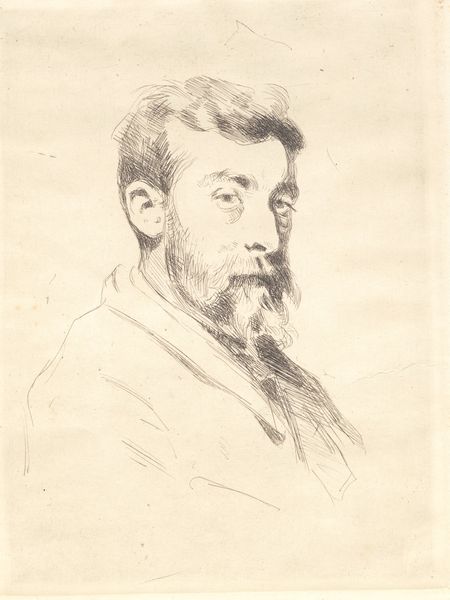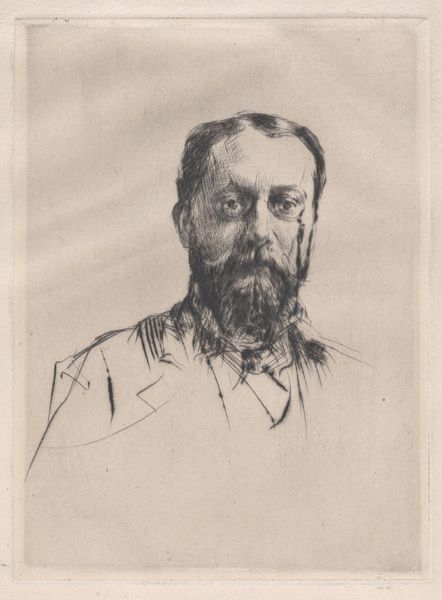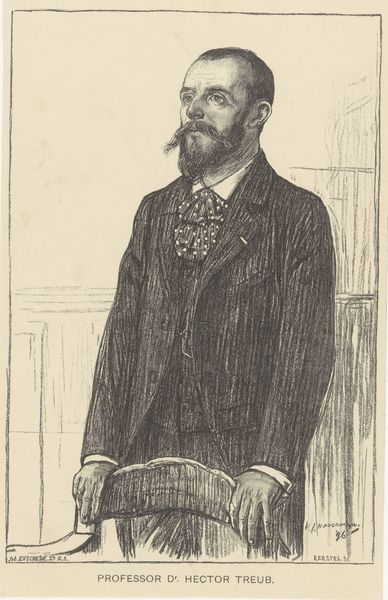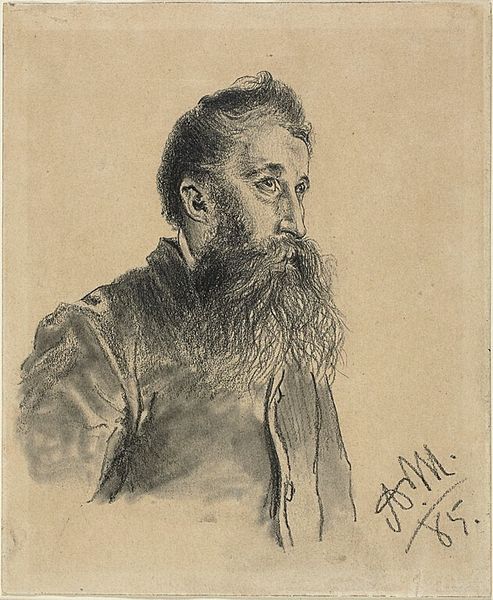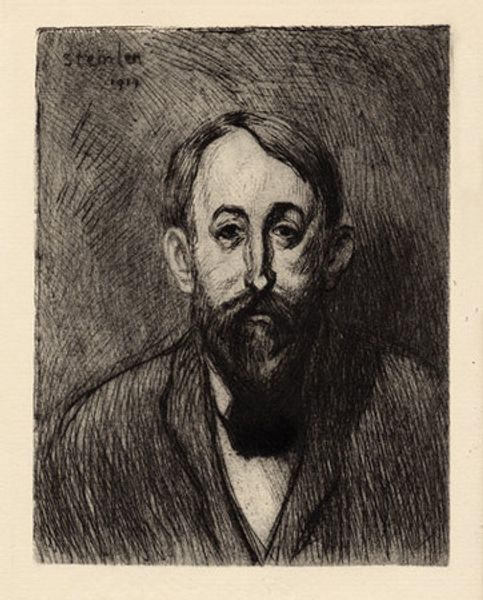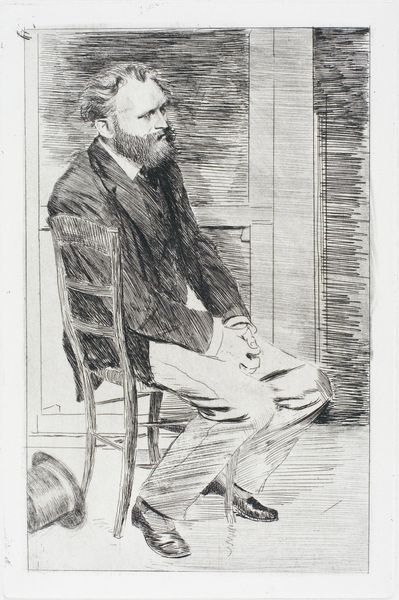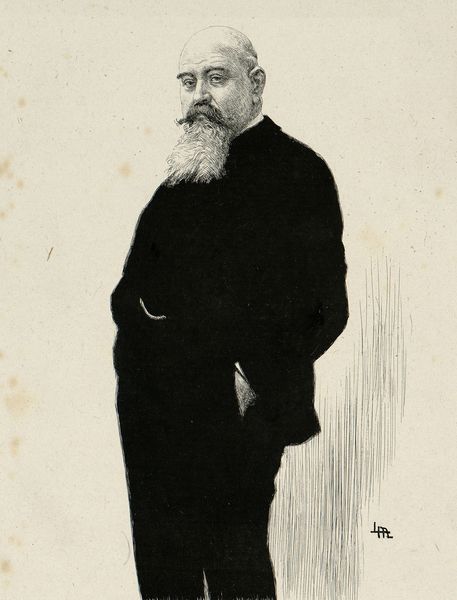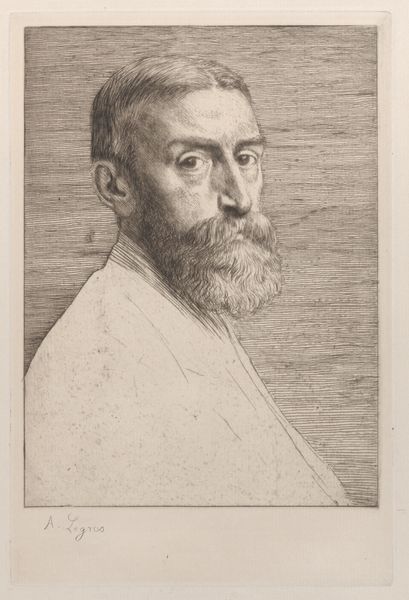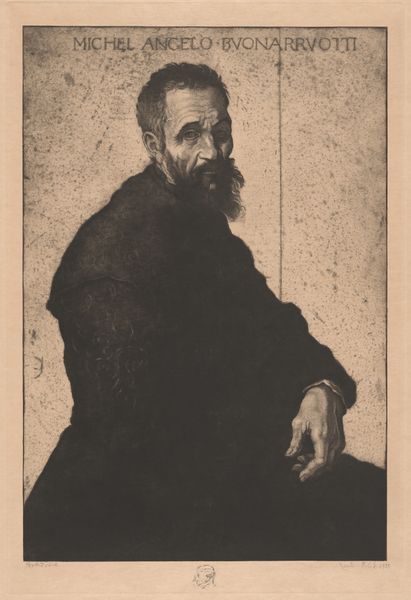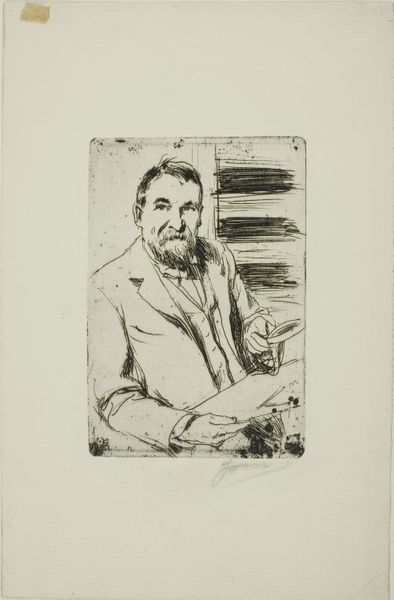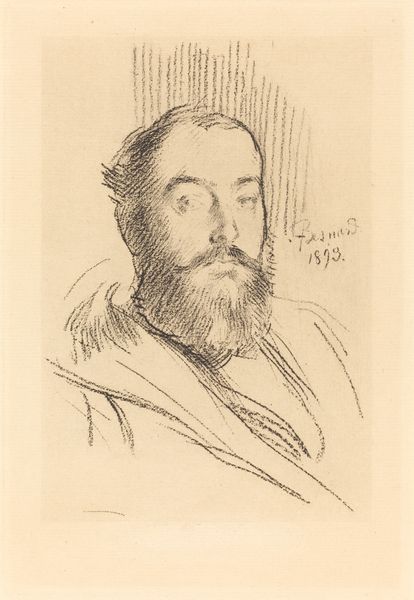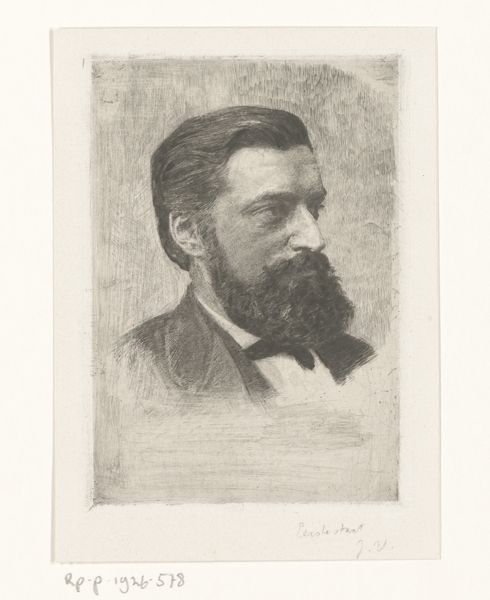
drawing, pencil, graphite
#
portrait
#
pencil drawn
#
drawing
#
pencil sketch
#
pencil drawing
#
pencil
#
graphite
#
portrait drawing
#
realism
Dimensions: height 608 mm, width 434 mm
Copyright: Rijks Museum: Open Domain
Editor: This is Nicolaas van der Waay's "Portrait of Mr. W.H. de Beaufort," created between 1865 and 1936. It's a graphite drawing on paper and there's a strong sense of formality conveyed by the subject's pose and attire. What aspects of this work stand out to you? Curator: I am struck by the artist’s reliance on readily available, mass-produced materials – graphite and paper – to render such a distinguished figure. The use of these common materials disrupts the traditional hierarchy that elevates oil paint and canvas. Where was this paper sourced? Was it hand-made, or from a mill? Its weave impacts the graphite deposition. And what statement does it make to portray a gentleman with *this* drawing? It forces a reevaluation of artistic labour and the perceived value of different media. Editor: That's fascinating. I hadn't considered the material choices as a statement in themselves. Does the subject’s social standing, Mr. de Beaufort, impact your interpretation? Curator: Absolutely. De Beaufort's elevated status intersects oddly with the "low" medium of pencil drawing. Think about the socio-economic context; how was portraiture typically commissioned and consumed during this period? Van der Waay subverts expectations, perhaps democratizing portraiture, or critiquing the elite through the lens of accessible materials. We have a labor of skill rendered on accessible resources that can reach wider consumption channels, like lithographs or printing blocks based on it. Editor: So, it's not just about *who* is portrayed, but also *how* and *with what*? I see what you mean, the choices challenge traditional notions of art and its relationship to social class. Curator: Precisely. The value lies not just in the image, but in understanding its production, consumption, and the statement the materials make about accessibility and the role of art within society. Editor: This really broadened my perspective on what to consider when analyzing art! Thanks. Curator: My pleasure. Examining the material reality behind an artwork can unlock powerful insights.
Comments
No comments
Be the first to comment and join the conversation on the ultimate creative platform.

